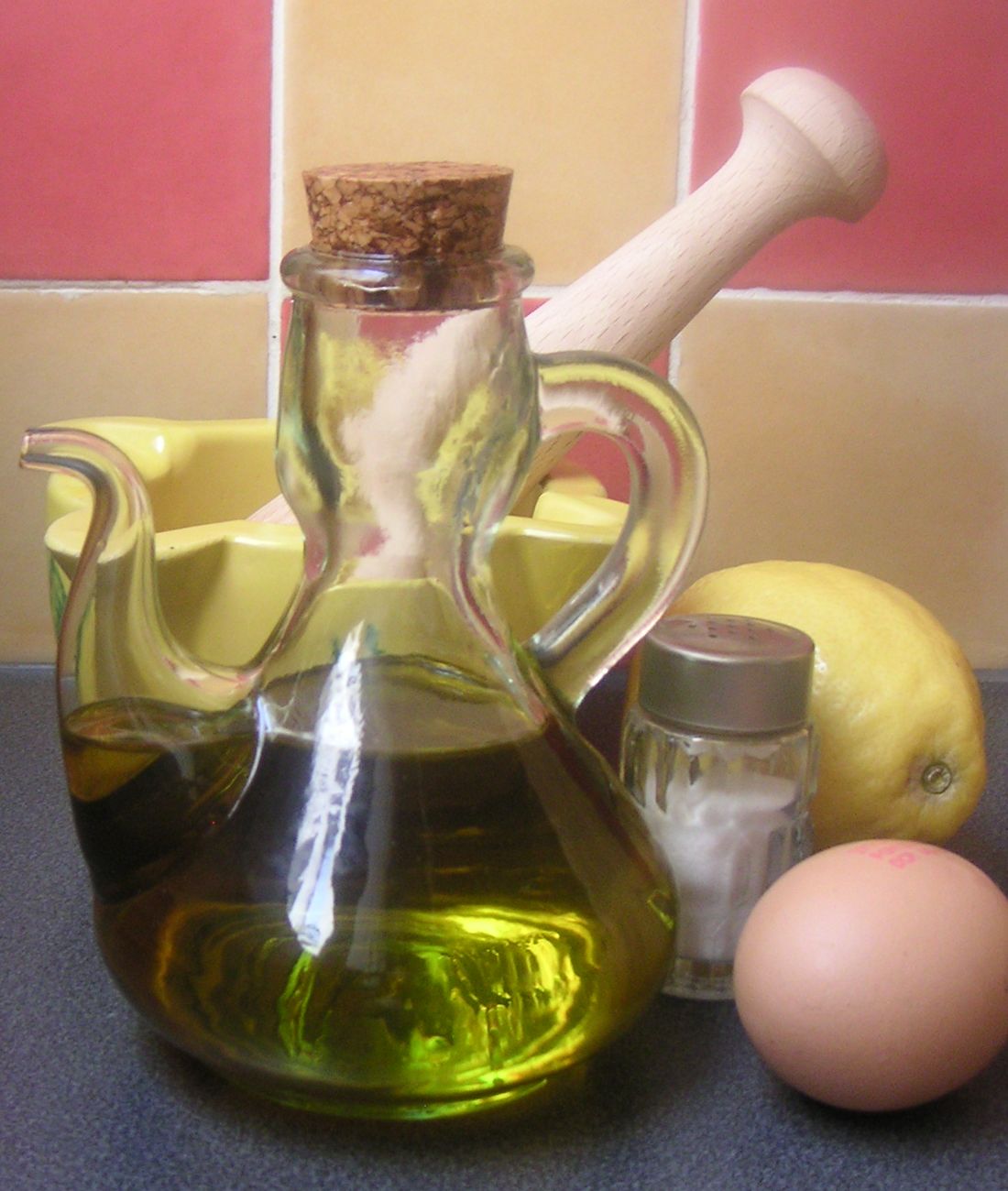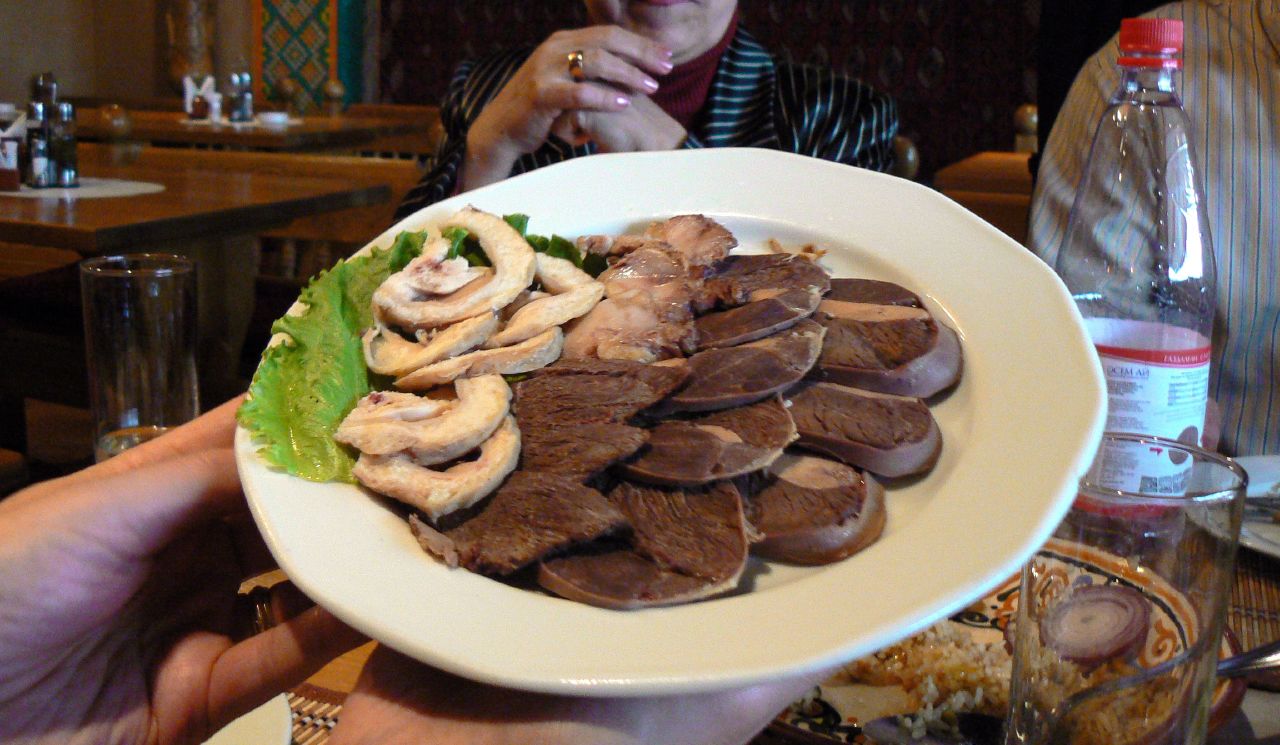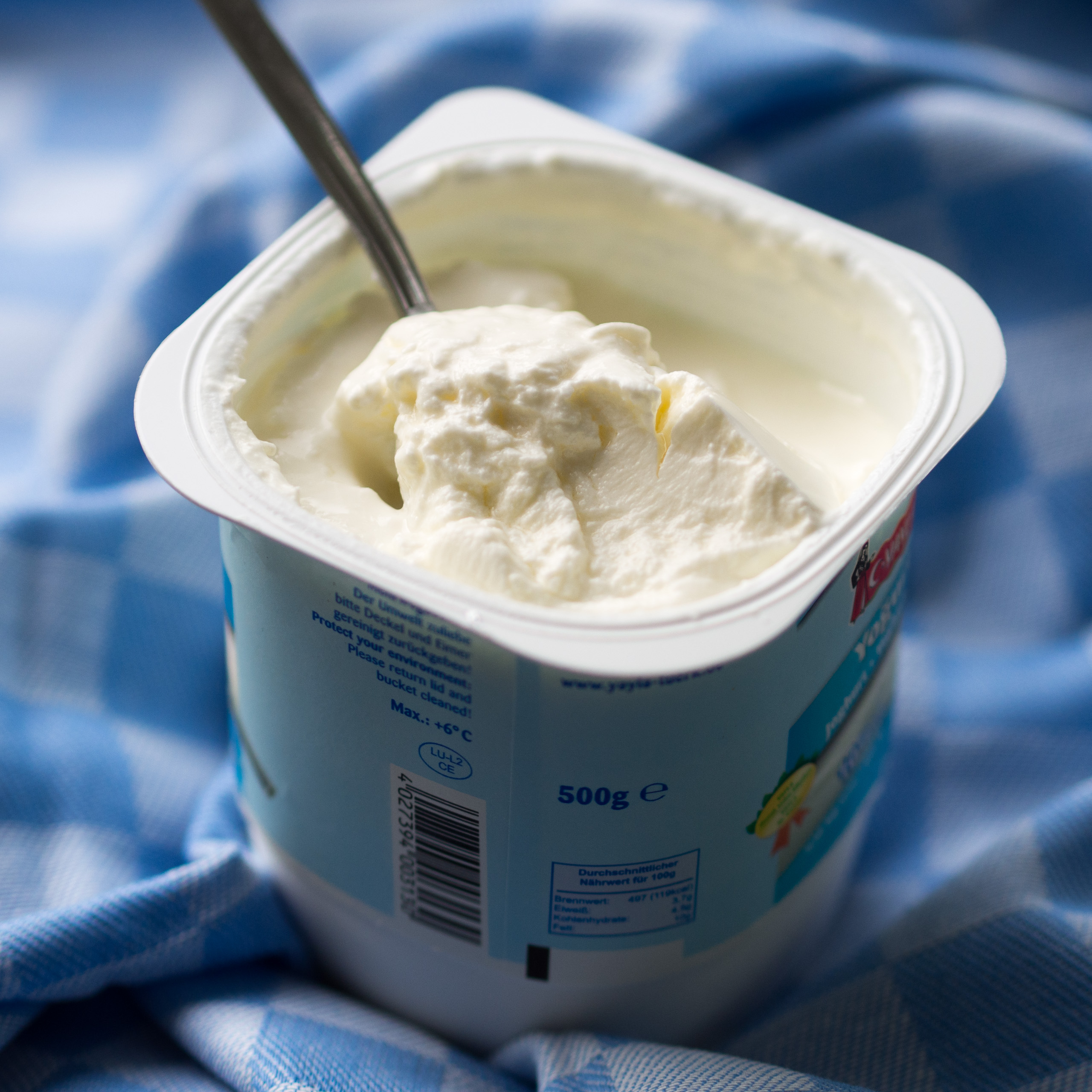|
Qatyq
Qatiq is a fermented milk product from the Turkic countries. It is considered a more solid form of yogurt than ''ayran''.''Food on the Move'' (ed. by Harlan Walker). Oxford Symposium, 1997. . Page 245. In order to make qatiq, boiled milk is fermented for 6–10 hours in a warm place. Sometimes red beets or cherries are used for colouring. The product may be kept in a cool place for two or three days. If stored longer, it will turn sour; it may still be added to high-fat soups, though. The '' chalop'' soup is made from qatiq in Uzbekistan. When sour milk is strained in a canvas bag, the resulting product is called suzma. Dried suzma, or kurut, is often rolled into marble-size balls. In Bulgaria, ''katǎk'' is a spread that has the consistency of mayonnaise. See also * Cacık – a cognate name applied to another dish in Turkey and some neighbouring countries * List of dairy products * List of yogurt-based dishes and beverages This is a list of yogurt-based dishes and b ... [...More Info...] [...Related Items...] OR: [Wikipedia] [Google] [Baidu] |
Mayonnaise
Mayonnaise (), colloquially referred to as "mayo" (), is a thick, creamy sauce with a rich and tangy taste that is commonly used on sandwiches, hamburgers, Salad#Bound salads, bound salads, and French fries. It also forms the base for various other sauces, such as tartar sauce, fry sauce, remoulade, salsa golf, ranch dressing, and rouille. Mayonnaise is an emulsion of Edible oil, oil, egg yolk, and an acid, either vinegar or lemon juice; there are many variants using additional flavorings. The color varies from near-white to pale yellow, and its texture from a light cream to a thick gel. Commercial eggless versions are made for those who avoid chicken eggs because of egg allergies, to limit cholesterol, dietary cholesterol, or because they are vegetarian or Veganism, vegan. History ''Mayonnaise'' is a French cuisine appellation that seems to have appeared for the first time in 1806. The hypotheses invoked over time as to the origin(s) of mayonnaise have been numerous and c ... [...More Info...] [...Related Items...] OR: [Wikipedia] [Google] [Baidu] |
Turkmen Cuisine
Turkmen cuisine, the cuisine of Turkmenistan, is similar to that of the rest of Central Asia. Turkmen Nomad, seminomadic culture revolved around animal husbandry, especially sheep herding, and accordingly Turkmen cuisine is noted for its focus on meat, particularly mutton and lamb. One source notes, The nomadic past has left a very noticeable trace in Turkmen cuisine - the basis of the diet is meat: lamb, meat of gazelles, non-working camels, wild fowl, chicken. Beef is consumed much less frequently because this food appeared on the table much later, Turkmens don't eat horse meat at all. Turkmen cuisine does not generally use spices or seasonings other than salt and black pepper, and is typically cooked with large amounts of widely available cottonseed oil. A description of Turkmen foods presented at an annual culinary festival included "...more than 15 kinds of soup, meat and fish delicacies, ruddy ichlekli (meat pies), appetizing gutaps with different fillings (pumpkin, spinac ... [...More Info...] [...Related Items...] OR: [Wikipedia] [Google] [Baidu] |
Turkish Cuisine
Turkish cuisine () is largely the heritage of Ottoman cuisine, Ottoman cuisine (Osmanlı mutfağı), European influences, Seljuk Empire, Seljuk cuisine and the Turkish diaspora. Turkish cuisine with traditional Turkic peoples, Turkic elements such as yogurt, ayran, kaymak, gains influences from Mediterranean cuisine, Mediterranean, Balkan cuisine, Balkan, Middle Eastern cuisine, Middle Eastern, Central Asian cuisine, Central Asian and Eastern European cuisine, Eastern European cuisines. Turkish cuisine shows variation across Turkey. The cooking of Istanbul, Bursa, İzmir, and the rest of the Anatolia region inherits many elements of Ottoman court cuisine, including moderate use of spices, a preference for rice over bulgur, koftes, and a wider availability of vegetable stews (''türlü''), eggplant, stuffed dolmas and fish. The cuisine of the Black Sea Region uses fish extensively, especially the European anchovy, Black Sea anchovy (''hamsi'') and includes maize dishes. The cuisi ... [...More Info...] [...Related Items...] OR: [Wikipedia] [Google] [Baidu] |
Tatar Cuisine
Tatar cuisine is primarily the cuisine of the Volga Tatars, who live in Tatarstan, Russia, and surrounding areas. History The cuisine of the Volga Tatars takes its origin from the cuisine of the Volga Bulgars, who once were nomads, but nearly 1500 years ago turned to agriculture and assimilated into local agricultural societies. Tatar cuisine was influenced by the surrounding peoples – Russians, Mari people, Mari, Udmurts, and also peoples of Central Asia, especially Uzbeks. Dishes such as ''pilaw'' (pilaf), halvah (''xälwä''), and Sharbat (drink), sherbet (') entered long ago into the Tatar culture. Tatars became familiar with many elements of Russian cuisine early in their history. However, culinary influences and greater variety of products have not changed the basic ethnic features of Tatar cuisine but have instead made it more diverse. Geography and nature were also instrumental in the shaping of the Tatar cuisine. The location of the Tatars at the border of two geograp ... [...More Info...] [...Related Items...] OR: [Wikipedia] [Google] [Baidu] |
Kazakh Cuisine
Traditional Kazakh cuisine is the traditional food of the Kazakh people. It is focused on mutton and horse meat, as well as various Dairy products, milk products. For hundreds of years, Kazakhs were herders who raised fat-tailed sheep, Bactrian camels, and horses, relying on these animals for transportation, clothing, and food. The cooking techniques and major ingredients have been strongly influenced by the nation's nomadic way of life. For example, most cooking techniques are aimed at long-term Food preservation, preservation of food. There is a large practice of salting and drying meat so that it will last, and there is a preference for sour milk, as it is easier to save in a nomadic lifestyle. Meat in various forms has always been the primary ingredient of Kazakh cuisine, and traditional Kazakh cooking is based on boiling. Horse and mutton are the most popular forms of meat and are most often served in large uncut pieces which have been boiled. Kazakhs cared especially for hor ... [...More Info...] [...Related Items...] OR: [Wikipedia] [Google] [Baidu] |
Bulgarian Cuisine
Bulgarian cuisine is part of the cuisine of Eastern Europe, sharing characteristics with other Balkan cuisines. Bulgarian cooking traditions are diverse because of geographical factors such as climatic conditions suitable for a variety of vegetables, herbs, and fruit. Aside from the variety of local Bulgarian dishes, Bulgarian cuisine shares a number of dishes with its neighboring countries, in particular with Turkish cuisine, Turkish and Greek cuisine. Bulgarian cuisine includes a significant contribution from Ottoman cuisine, and therefore shares a number of dishes with Middle Eastern cuisine, including ''moussaka'', ''Đuveč, gyuvetch'', ''Kofta, kyufte'', ''baklava'', ''ayran'', and ''shish kebab''. Bulgarian food often incorporates salads as appetizers and is also noted for the prominence of dairy products, Bulgarian wine, wines, and other alcoholic drinks such as ''rakia''. The cuisine also features a variety of soups, such as the cold soup tarator, and pastries, such as ... [...More Info...] [...Related Items...] OR: [Wikipedia] [Google] [Baidu] |
Azerbaijani Cuisine
Azerbaijani cuisine () is the cooking styles and dishes of the Azerbaijan, Republic of Azerbaijan and Azerbaijan (Iran), Iranian Azerbaijan. The cuisine is influenced by the country's diversity of agriculture, from abundant grasslands which historically allowed for a culture of pastoralism to develop, as well as to the unique geographical location of the country, which is situated on the crossroads of Europe and Asia with access to the Caspian Sea. The location has enabled the people to develop a varied diet rich in produce, milk products, and meat, including beef, mutton, fish and Game (hunting), game. The location, which was contested by many historical kingdoms, khanates, and empires, also meant that Azerbaijani cuisine was influenced by the culinary traditions of multiple different cultures, including Turkic cuisines, Turkic, Iranian cuisine, Iranian, and Eastern European cuisine, Eastern European, and many dishes of Armenian cuisine, Armenian and Georgian cuisine, Georgian cu ... [...More Info...] [...Related Items...] OR: [Wikipedia] [Google] [Baidu] |
Yogurts
Yogurt (; , from , ; also spelled yoghurt, yogourt or yoghourt) is a food produced by bacterial fermentation of milk. Fermentation of sugars in the milk by these bacteria produces lactic acid, which acts on milk protein to give yogurt its texture and characteristic tart flavor. Cow's milk is most commonly used to make yogurt. Milk from water buffalo, goats, ewes, mares, camels, and yaks is also used to produce yogurt. The milk used may be homogenized or not. It may be pasteurized or raw. Each type of milk produces substantially different results. Yogurt is produced using a culture of ''Lactobacillus delbrueckii'' subsp. ''bulgaricus'' and ''Streptococcus thermophilus'' bacteria. Other lactobacilli and bifidobacteria are sometimes added during or after culturing yogurt. Some countries require yogurt to contain a specific amount of colony-forming units (CFU) of bacteria; for example, in China the requirement for the number of lactobacillus bacteria is at least 1 million CFU ... [...More Info...] [...Related Items...] OR: [Wikipedia] [Google] [Baidu] |
List Of Yogurt-based Dishes And Beverages
This is a list of yogurt-based dishes and beverages. Yogurt is a food produced by bacterial fermentation of milk. The bacteria used to make yogurt are known as "yogurt cultures". Fermentation of lactose by these bacteria produces lactic acid, which acts on milk protein to give yogurt its texture and its characteristic tang. Worldwide, cow's milk, the protein of which is mainly casein, is most commonly used to make yogurt. Milk from water buffalo, goats, ewes, mares, camels, and yaks is also used to produce yogurt in various parts of the world. Dishes * Churri – a spicy Indian side dish * Çılbır – Turkish egg dish * Jameed – Jordanian yogurt strained cheese * Mansaf - Levantine dish of meat cooked in yogurt * * Labanie * * * * Soups * Ash-e doogh – Iranian Azerbaijani thick yogurt soup * Spas – Armenian matzoon soup * Tzatziki – cold yogurt and herb sauce from Greece and Turkey * Dovga – Azerbaijani yogurt soup * Tarator – Bulgarian ... [...More Info...] [...Related Items...] OR: [Wikipedia] [Google] [Baidu] |
List Of Dairy Products
This is a list of dairy products. A dairy product is food produced from the milk of mammals. A production plant for the processing of milk is called a dairy or a dairy factory. Dairy farming is a class of agriculture, agricultural, or an animal husbandry, enterprise, for long-term production of milk, usually from dairy cows, but also from goat milk, goats, sheep milk, sheep and camel milk, camels, which may be either processed on-site or transported to a dairy factory for processing and eventual retail sale. A B C D E F G H I J K L M P Q R S T U V W Y Z Unsorted * Crema (dairy product) See also * List of cheeses * List of cheesemakers * List of countries by milk consumption per capita * List of dairy product companies in the United States * List of goat milk cheeses * List of ice cream brands * List of ice cream flavors * List of sheep milk cheeses * List of water buffalo cheeses * List of yogurt-based dishes ... [...More Info...] [...Related Items...] OR: [Wikipedia] [Google] [Baidu] |
Cacık
Tzatziki (, , ), also known as ''cacık'' () or ''tarator'', is a class of dip, soup, or sauce found in the cuisines of Southeastern Europe and West Asia. It is made of salted strained yogurt or diluted yogurt mixed with cucumbers, garlic, salt, olive oil, red wine vinegar, sometimes with lemon juice, and herbs such as dill, mint, parsley and thyme. It is served as a cold appetiser ( meze), a side dish, and as a sauce for souvlaki and gyros sandwiches and other foods. Etymology The word ''tzatziki'' appeared in English around the mid-20th century as a loanword from Modern Greek (), which in turn comes from the Turkish word . The root is likely related to several words in West Asian languages. Persian ' () refers to various herbs used for cooking, and Kurdish jaj or ژاژ refers to the caraway herb. That word is combined with the Turkish diminutive suffix ''-cık'' to yield ''cacık''. It may be related to an Armenian word, ''cacıg''. According to Sevan Nişanyan the Arme ... [...More Info...] [...Related Items...] OR: [Wikipedia] [Google] [Baidu] |










